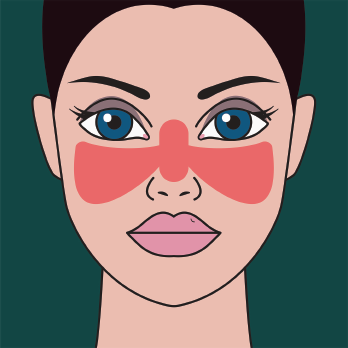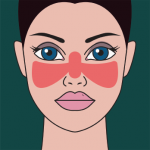Dr. Salmon notes, “He mentions coma and stupor, he notes atrophy of the cortical substance and edema of the meninges. In his descriptions, we have rash, arthritis, pleurisy and central nervous system involvement, as well as constitutional signs such as fever—that’s a pretty good number of features listed in the ACR criteria for classification of lupus.”
Dr. Kaposi provided a bleak description of the disease’s most acute manifestations. “At the same time, the patients concerned had the symptoms of an intense, generalized, feverish disease. They laid on the back, had a hot, dry, cracked tongue, general prostration, disturbed consciousness. Over the course of two to three weeks, coma … and death occurred under increasing brain disorder. Among 15 female cases of lupus erythematosus, we saw this picture five times, and three times death occurred with the symptoms described.”
The difference in disease course of the two forms of rash earlier described by Dr. Hebra is detailed by Dr. Kaposi: a form of lupus that is cutaneous only (lupus erythematosus discoides) and a form of lupus that occurs with systemic and sometimes life-threatening symptoms (designated as lupus erythematosus discretus et aggregatus).

Lupus often presents with a butterfly rash.
Dr. Kaposi noted: “The lupus erythematosus discoides runs regularly and continuously in a chronic fashion, and usually without any serious complication. … Lupus erythematosus aggregates, on the other hand, also show a chronic affect, and alone more often than either from the beginning, or at least during the later course, acute eruptions occurred. Accordingly, all those intense local and deleterious general manifestations of the disease, which I have described as accompanying the acute eruption of the lupus erythematosus previously, predominantly, or almost exclusively belong to that second form of the lupus erythematosus, and this is accordingly the prognostically more serious one to watch.”
The description and characterization of rash types maps fairly well onto modern distinctions between patients who have cutaneous discoid disease only and those who have SLE. As Dr. Salmon notes, “Most patients who only have discoid disease never develop systemic lupus, whereas patients with more serious skin manifestations—subacute cutaneous lupus or vasculitis—tend to be the ones who have more systemic disease.”
Advances in Understanding
The renowned internist and educator Sir William Osler described SLE and further advanced the idea that skin disease (including lupus erythematosus) can be a sign of significant systemic illness, and that systemic manifestations may occur in some cases even without skin disease.6 By the turn of the century, SLE had become well recognized as a systemic disease, though little was known about its etiology.4 The discovery of the LE cell by Malcolm Hargrave, MD, in 1948 emphasized the systemic nature of the disease and ushered in our modern understanding of SLE.5


